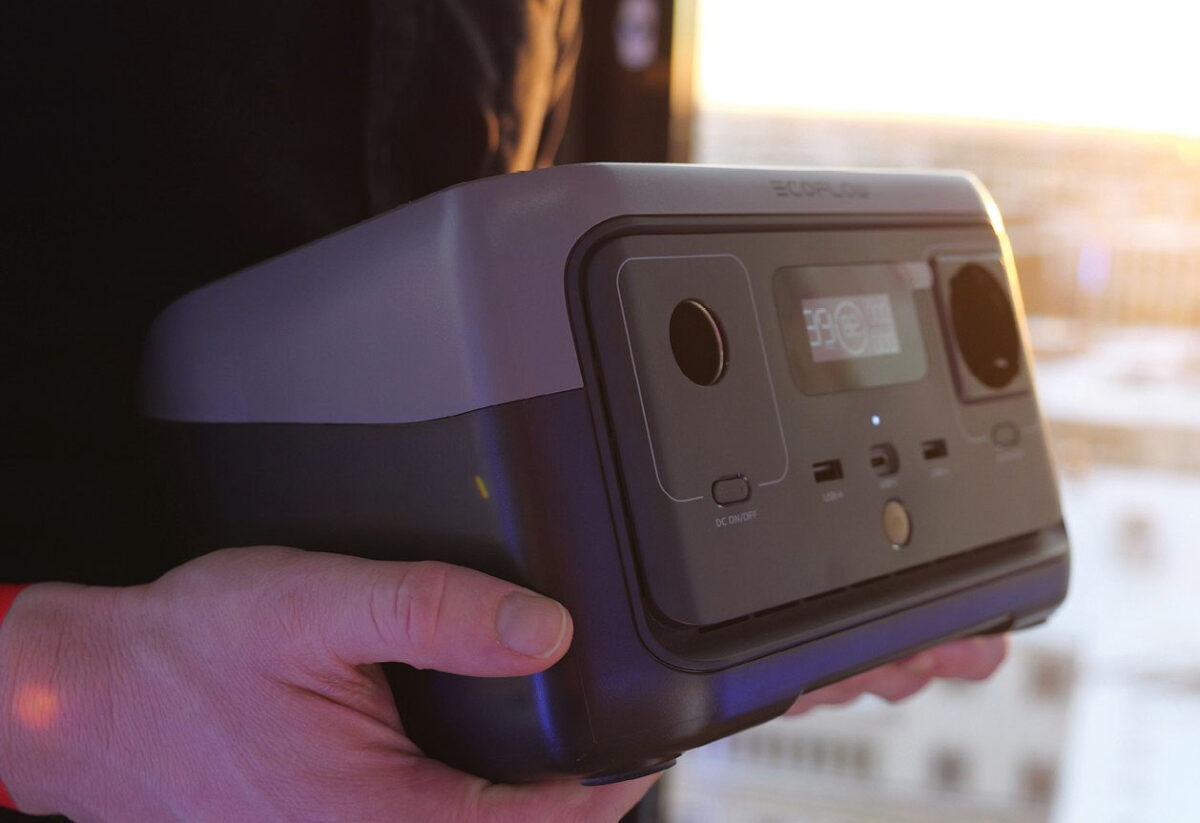At the Consumer Electronics Show (CES) in Las Vegas, in January 2024, the likes of Amazon, Samsung, Google, and LG were busily launching TVs, smart home devices, robots of all kinds, and talking up artificial intelligence developments. A relatively new player was also taking up considerable showfloor space: Portable power stations, also known as solar generators, were holding prime locations and hosting major launches for new products.
The rise in batteries and hybrid energy solutions comes alongside the rise in solar installations and popularity. But solar has enjoyed the remarkable combination of both improved efficiency and falling prices. For large scale solar generators, there is a different pitch: The shift to lithium batteries has enabled new and attractive designs and the focus is on mixing solar charging and energy savings with energy security, for off-grid power and back-up systems.
Fast moving
History lesson
The sector was pioneered through the early 2010s, with companies such as GoalZero offering portable solar generators via sealed lead-acid batteries. The specs explain the lack of success: a 400 Wh option weighed 13.2 kg and was more cumbersome than useful. Aspect Solar was an early innovator with lithium-ion batteries, offering an LFP battery solution in its Sunsocket Sun-Tracking Solar Generator, with built-in solar modules. Aspect Solar went out of business before the idea really took hold, however.
Instead, the first large success came from Jackery, a company initially known as a powerbank maker for phones. In 2016, the company took to crowdfunding platform Kickstarter and raised nearly $100,000 to commercialize its Power Pro, a 578 Wh LFP battery featuring Panasonic battery cells and offering solar charging plus DC and 110V AC outputs. The design came in at just under 5.5 kg, much lighter than lead-acid solutions.
That success, and some marketing savvy, saw Jackery become an established player, with outdoor-focused options of all sizes and capacities. Competitors such as EcoFlow quickly followed, offering similar designs. EcoFlow also started via crowdfunding, in 2017, with Zendure following in 2017, Bluetti in 2019, and more. Gas and diesel generator companies were soon being offered lithium-based power stations and solar generators as emissions-free indoor power back-ups became more desirable. From the PV industry, solar inverter makers including Growatt have moved to offer portable solar generators too.
While such products were being pioneered, though, who exactly was buying, and what was the tipping point into mainstream success? The answer comes, in part, with a tinfoil hat.
Doomsday preppers
Buck Buchanan is marketing director at Geneverse, a sister company of Jackery under parent Hello Tech. Geneverse is focused on indoor use, versus outdoor solutions, and was founded after a surge of interest from outdoor enthusiasts.
“There’s definitely the outdoor community that really loves this product but the people that embrace this more than anybody else, and kind of help promote the portable solar generator, are the doomsday preppers,” said Buchanan. “I mean, they are the ones that went on YouTube and detailed how to power your bunker, how to power everything off-grid, and those were really popular. That’s where things started and it started with a slightly older demographic and it’s moved towards young people, even those living in apartments now.”
Kevin Benedict, product and solution manager at EcoFlow, echoed those thoughts, adding in a few more categories of interested consumer for its portable power stations. “We first saw uptake from outdoor enthusiasts, from those who want to enjoy nature and the outdoors but don’t want to leave conveniences behind, from those like auto enthusiasts, campers, and so on,” said Benedict. “And then came homeowners who wanted to be prepared for emergency situations.”
Future technology
Both pointed to times of natural disaster and grid crises – as unfortunate as they are – as being big drivers of sales, especially in more exposed parts of the United States. “It’s states like Florida, Texas, and California,” said Buchanan. “Florida because we have natural disasters, hurricanes. Texas has a horrible grid. And, honestly, we have incredibly reactive customers because once you’ve had no power for three days, that’s when they come to us to buy the product. Or once you’ve relied on a neighbor who has one of these products, and you don’t have one and see how useful it is, how it can save your refrigerator full of food and medicines, you just don’t risk it the next time.”
Benedict confirmed something similar, pointing to regions which have suffered natural disaster as having very high penetration for battery products, including Puerto Rico, which was battered by Hurricanes Irma and Maria in 2017, and Hurricane Fiona in 2022, entirely collapsing the grid for as much as a year in 2017.
Disaster preparation is not the only sales driver, however. In Germany, not a country known for extensive blackouts, and where Benedict is based, EcoFlow holds 83% of the portable power station market, which is taken up by both outdoor enthusiasts and the green-minded and those looking to save on high utility bills.
Boosting solar awareness
Solar generators are increasingly being sold with solar panels of all types, though portable panels are those most often bundled together with such products. EcoFlow data suggest around half of new purchasers buy a bundle including a portable power station and solar panels as they look to charge off-grid. Geneverse suggests an even higher figure, with some 70% buying at least one set of panels in a bundle.
“We have seen people embracing the move to balcony solar to save on utility bills and charging our products with their solar panels … in addition, they can then use these alongside their outdoor activity,” said Benedict.
Buchanan said the introduction to clean energy provided by portable solar generators alongside portable panels, is helping to improve understanding of both solar and batteries.
“Especially here in the United States, there’s still a little stigma about solar, like – does it work? How well does it work?” said Buchanan. “And especially with our portable solar generators, we harp on the fact that our machines are quiet. There’s no emissions. People are so not used to that, they’re used to gas generators. And now, you see our products and competitor products all being sold with panels and that’s helping with wider adoption and understanding.”
Buchanan added that the industry has a way to go, though, to educate folks who aren’t up to speed with energy technology. “It’s the funniest thing, we get a lot of calls from people wondering if their panels can just be plugged into appliances and how that works,” he said. “They just don’t understand the need for inverters, or that our solar generators store energy and output it. The most common question is: ‘Can my panels power my refrigerator?' Obviously, education can go further.”
This content is protected by copyright and may not be reused. If you want to cooperate with us and would like to reuse some of our content, please contact: editors@pv-magazine.com.




4 comments
By submitting this form you agree to pv magazine using your data for the purposes of publishing your comment.
Your personal data will only be disclosed or otherwise transmitted to third parties for the purposes of spam filtering or if this is necessary for technical maintenance of the website. Any other transfer to third parties will not take place unless this is justified on the basis of applicable data protection regulations or if pv magazine is legally obliged to do so.
You may revoke this consent at any time with effect for the future, in which case your personal data will be deleted immediately. Otherwise, your data will be deleted if pv magazine has processed your request or the purpose of data storage is fulfilled.
Further information on data privacy can be found in our Data Protection Policy.